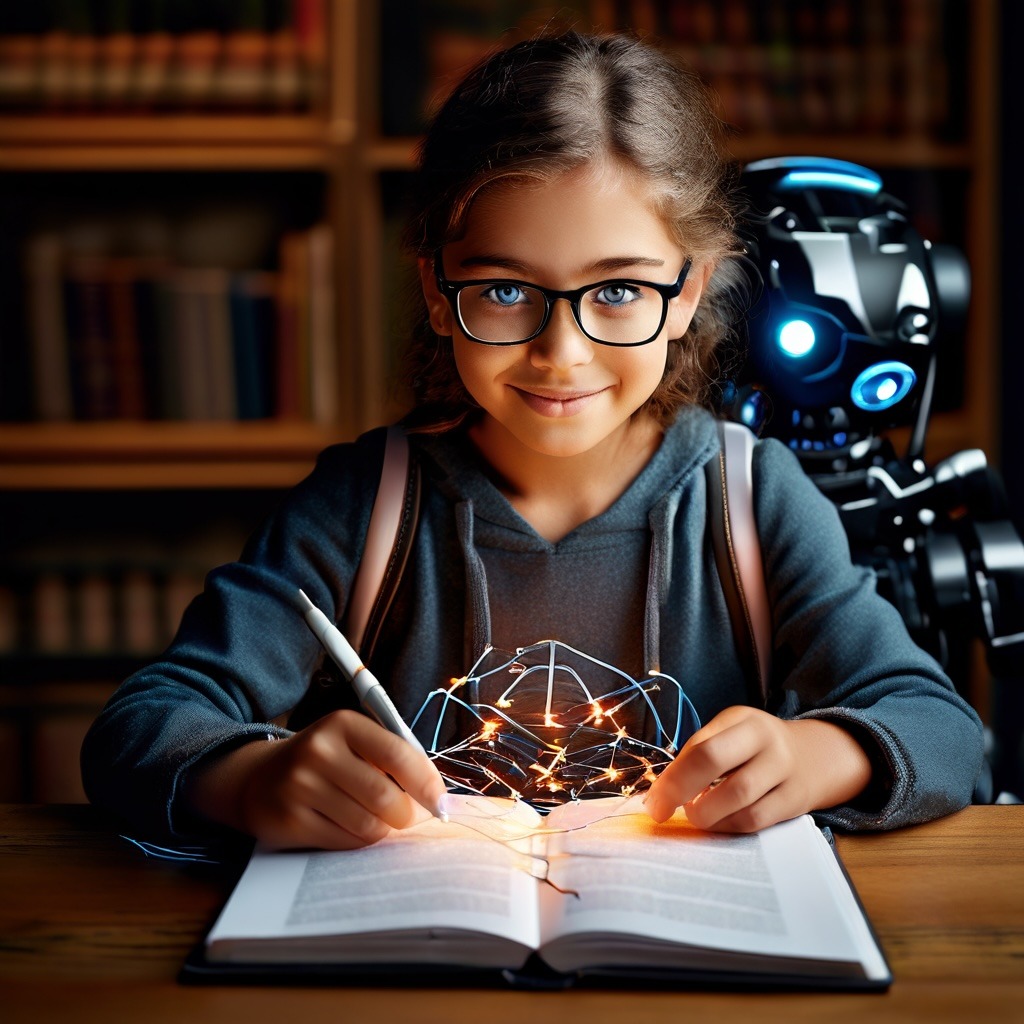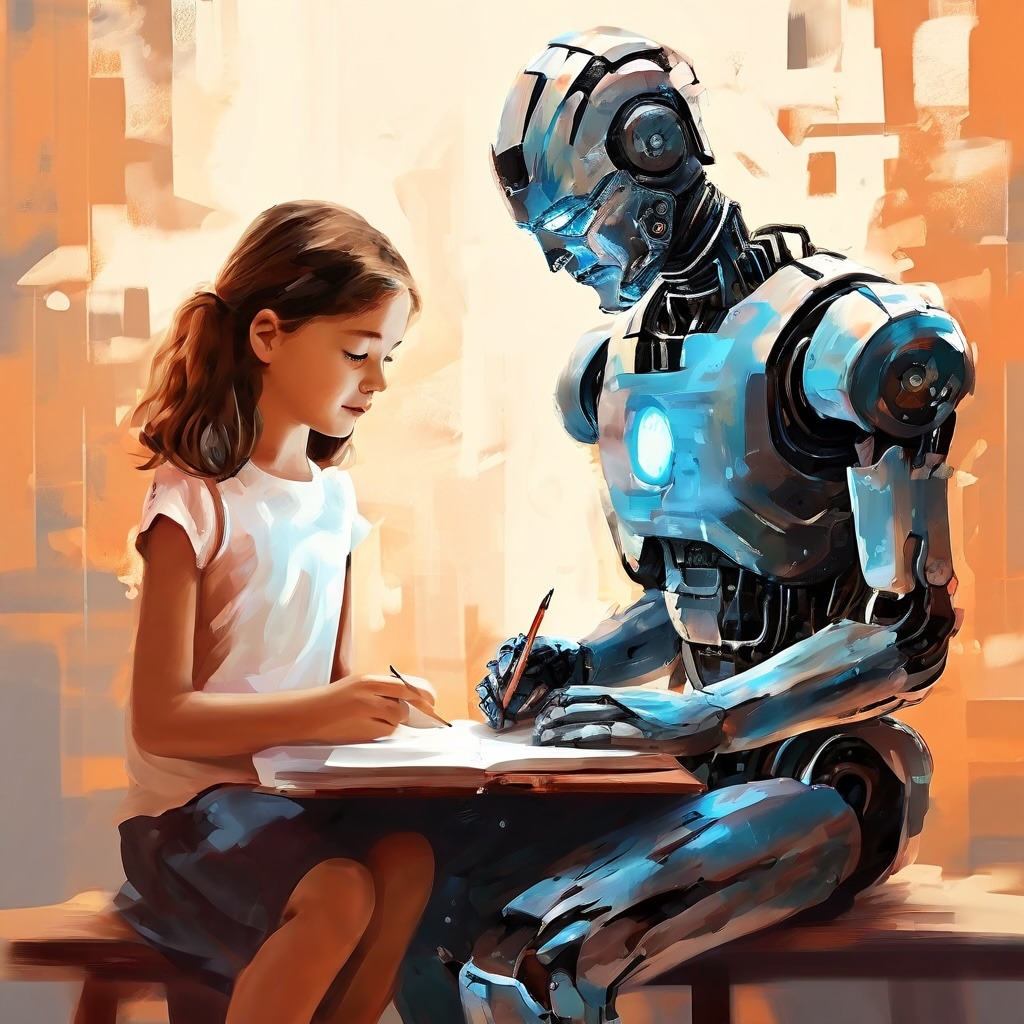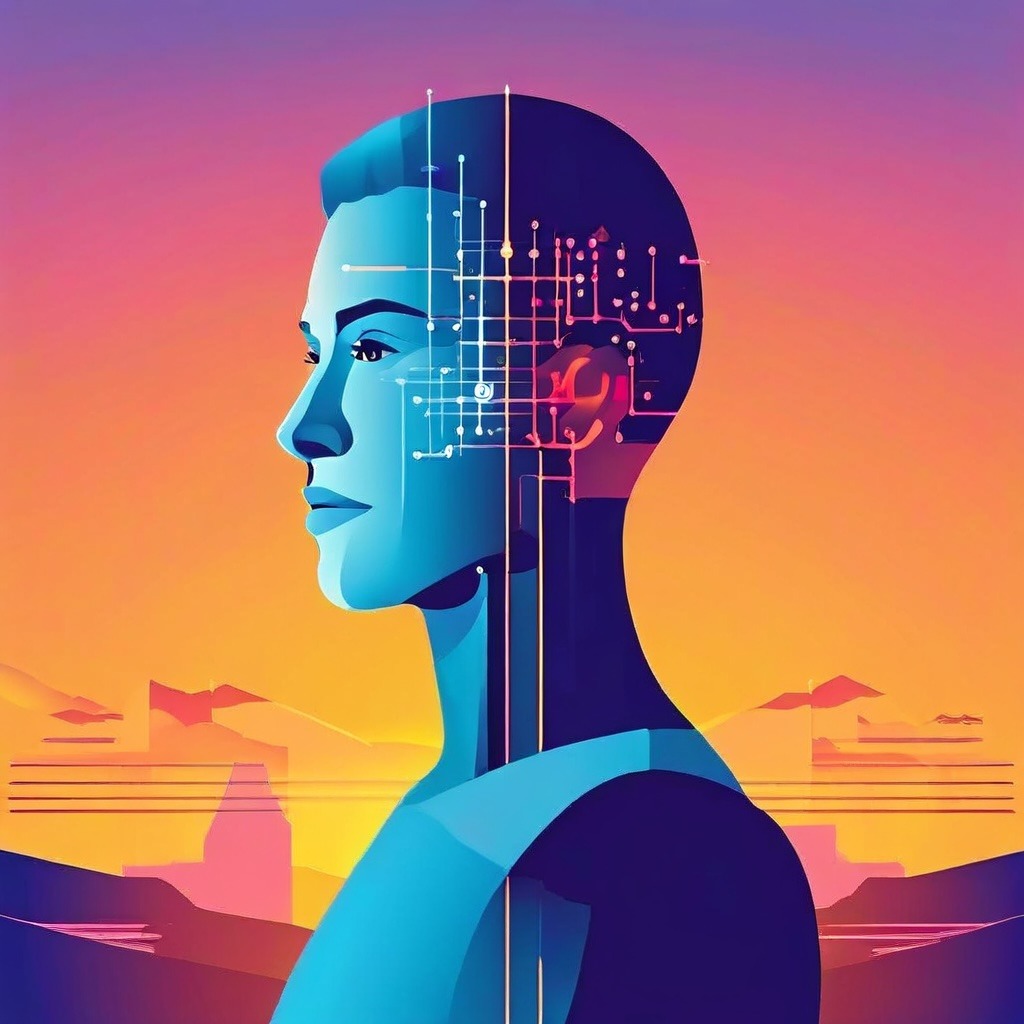As a teacher with over a decade of experience in the classroom, I’ve seen my fair share of educational trends come and go. But there’s one development that I believe is here to stay and has the potential to revolutionize how we teach and support our students: the use of artificial intelligence (AI) for data-driven insights and decision making, using AI in education.
Now, I know what you might be thinking. “Great, another tech solution that’s supposed to solve all our problems!” Trust me, I’ve been there. I’ve sat through countless professional development sessions where we’re told about the next big thing that’s going to make our jobs easier and our students more successful. But this time, I truly believe we’re onto something transformative.
In this post, I want to share my experiences and thoughts on how AI is changing the way we gather, analyze, and use data in education. I’ll discuss the benefits, the challenges, and the ethical considerations we need to keep in mind. Most importantly, I’ll talk about what this means for us as teachers and for our students.
The Current State of Data in Education
Before we dive into the AI stuff, let’s take a moment to reflect on how we currently use data in our schools. If you’re anything like me, you probably:
- Collect assessment data throughout the year
- Track attendance and behavior incidents
- Keep records of student demographics and family information
- Monitor student progress on various learning platforms
- Conduct surveys to gauge student engagement and wellbeing
All of this data is valuable, but let’s be honest – how often do we actually use it effectively? In my experience, data analysis often feels like an afterthought, something we do because we’re required to, not because it’s driving our day-to-day decisions in the classroom.
There are a few reasons for this:
- Time constraints: We’re already stretched thin with lesson planning, grading, and actually teaching. Finding time to dive deep into data analysis is a luxury many of us don’t have.
- Lack of expertise: Most of us aren’t data scientists. We might be able to calculate averages and spot general trends, but advanced statistical analysis? That’s not what we were trained for.
- Data silos: Often, different types of data are stored in separate systems that don’t talk to each other. Getting a holistic view of a student or class can be a logistical nightmare.
- Delayed insights: By the time we get around to analyzing data from standardized tests or end-of-year assessments, it’s often too late to make meaningful interventions for the students we tested.
This is where AI comes in. It has the potential to address all of these challenges and more.
Data Overload: The Challenge We All Face
Raise your hand if your desk is currently overflowing with student assessments, attendance records, standardized test results, and who knows what else. (My hand is up, too!) We collect so much information about our students, but it’s often scattered, time-consuming to analyze, and hard to turn into actionable strategies.
In my 25 years of teaching, I’ve witnessed a dramatic shift in how we use data in schools. When I first started, data mostly meant test scores and report card grades. We’d look at these a few times a year, but they didn’t really drive our day-to-day teaching. Now, data is everywhere in education. We have digital gradebooks, online learning platforms, attendance trackers, behavior management systems, and more – all generating loads of data on student performance and engagement. The challenge is making sense of all this information and using it to actually improve teaching and learning.
That’s where AI steps in. Advanced algorithms can process and analyze massive amounts of educational data to uncover patterns and insights that humans might miss. As a teacher, I’ve found that AI-powered analytics tools are helping me better understand my students’ needs and tailor my instruction accordingly.
How AI is Changing the Game
Real-time Analysis and Insights
Here’s the million-dollar question: Is this AI-powered data analysis actually making a difference in the classroom? I can confidently say yes. Here are a few ways it’s impacted my teaching:
- Targeted Instruction: The data has helped me pinpoint exactly where my students need the most support. This means my lessons are more focused and effective, and students are making more meaningful progress.
- Time Saver: AI has taken some of the administrative burden off my shoulders. I’m spending less time grading,tracking data manually, and creating individual learning plans. This frees up time for what really matters: teaching and building relationships with my students.
- More Effective Interventions: Thanks to early warning systems, I’m able to address potential problems before they become major roadblocks. This is a game-changer for struggling students.
- Student Empowerment: I’ve even started sharing some of the data dashboards with my students. This helps them understand their strengths, weaknesses, and areas for growth. It’s a powerful way to empower students to take ownership of their learning.
The AI analyzes this data in real-time and sends me alerts when it notices something that needs my attention. Just last week, it flagged that one of my usually high-performing students was suddenly struggling with algebra concepts. I was able to check in with her and discovered she’d been having trouble at home that was affecting her focus. Without the AI, I might not have noticed this change in her performance until our next big test.
Personalized Learning Pathways
One of the biggest challenges we face as teachers is differentiating instruction to meet the needs of all our students. AI can help by analyzing each student’s learning style, pace, and areas of strength and weakness to suggest personalized learning pathways.
I’ve been piloting an AI-driven math program in my class this year. It adapts in real-time based on how students perform on practice problems. If a student is breezing through basic algebra, it’ll ramp up the difficulty. If they’re struggling, it’ll provide more scaffolding or even suggest we revisit some prerequisite skills.
The result? My students are more engaged because they’re working at just the right level of challenge. And I’m able to spend more time supporting the students who need extra help, rather than trying to manage 30 different learning paths on my own.
- Adaptive Learning Platforms: These platforms use AI algorithms to adjust the difficulty level of tasks based on a student’s performance. If a student is struggling with a particular concept, the system can provide additional resources and practice problems to help them improve. Conversely, if a student excels, the platform can offer more challenging material to keep them engaged.
- Individualized Learning Paths: AI can help create personalized learning paths for students. By analyzing data on a student’s progress, AI can recommend specific lessons, exercises, and resources that align with their learning goals. This ensures that each student receives the right support at the right time.
- Real-Time Feedback: AI-driven tools can provide real-time feedback to students, allowing them to make immediate improvements. For example, writing assistants powered by AI can help students enhance their writing skills by suggesting better word choices, grammar corrections, and structural improvements as they work on their essays.
Predictive Analytics
This is where things get really exciting (and a bit sci-fi). AI can analyze historical data to predict future outcomes. In education, this could mean:
- Identifying students at risk of dropping out
- Predicting which students might need extra support in specific subjects
- Forecasting resource needs for the coming school year
My school district recently implemented an AI system that analyzes factors like attendance, grades, behavior incidents, and even socioeconomic data to predict which students are at risk of not graduating. It’s not perfect, but it’s already helped us identify several students who were flying under the radar and get them the support they needed.
Automated Administrative Tasks
This might not sound as exciting as predicting the future, but trust me, it’s a game-changer. AI can take over many of the repetitive administrative tasks that eat up so much of our time. Things like:
- Grading multiple-choice assessments
- Generating progress reports
- Scheduling parent-teacher conferences
- Tracking and reporting on student accommodations
I used to spend hours every week just inputting grades and generating reports. Now, our AI-powered grading system does most of this automatically, freeing up time for me to focus on actual teaching and student support.
Improved Decision Making and the Refining of Instructional Strategies
AI can also assist us in refining our instructional strategies. By providing insights into what works and what doesn’t, AI helps us make informed decisions about how to teach more effectively.
- Curriculum Development: AI can analyze the effectiveness of different curriculum components. By examining student performance data, AI can identify which topics need more attention and which teaching methods are most successful. This information can guide us in developing a more effective curriculum.
- Professional Development: AI can help us identify areas where we might need additional training or support. For example, if data shows that students are consistently underperforming in a particular subject, we might benefit from professional development opportunities focused on new teaching strategies or content knowledge in that area.
- Instructional Materials: AI can evaluate the effectiveness of various instructional materials, such as textbooks, videos, and interactive tools. By analyzing how students interact with these resources and their impact on learning outcomes, AI can help us choose the most effective materials for our classrooms.
For example, our district used AI to analyze years of student performance data, teacher feedback, and national standards to identify gaps in our science curriculum. This led to targeted improvements that have already shown positive results in our state assessments.
Improving Student Support
Another critical area where AI can make a difference is in providing timely and effective support to students. Whether it’s academic, social, or emotional support, AI can help us identify students in need and intervene early.
- Early Warning Systems: By analyzing data on student performance and behavior, AI can identify students at risk of falling behind. This allows us to provide targeted interventions, such as tutoring, counseling, or additional resources, before the situation worsens. AI is also being used to analyze attendance and behavior data to identify patterns and intervene early when issues arise. As a teacher, I’ve found this particularly helpful for managing large classes and spotting potential problems before they escalate. Our school uses an AI system that tracks student attendance and flags unusual patterns. It recently alerted me to a student who had perfect attendance for months but suddenly started missing classes frequently. This prompted me to reach out to the student and their family, where I learned they were having transportation issues. We were able to connect them with resources to resolve the problem and get the student back on track.
- Social-Emotional Learning: AI can also support students’ social and emotional development. For example, AI-driven chatbots can offer students a safe space to discuss their concerns and receive guidance. Additionally, AI can analyze data on students’ social interactions and provide insights into their well-being.
- Special Education: AI can assist in creating individualized education plans (IEPs) for students with special needs. By analyzing data on their strengths and challenges, AI can recommend specific strategies and accommodations to support their learning.
The Challenges and Ethical Considerations
Now, I don’t want to paint AI as some kind of magical solution to all our problems. Like any powerful tool, it comes with its own set of challenges and ethical considerations that we need to grapple with.
Data Privacy and Security
We’re dealing with sensitive information about minors. How do we ensure this data is kept secure and used only for its intended purposes? What happens if there’s a data breach?
In my district, we’ve had to have some tough conversations about data governance. We’ve implemented strict protocols about who can access what data and for what purposes. We’ve also had to be very transparent with parents about how we’re using AI and what safeguards are in place.
Algorithmic Bias
AI systems are only as good as the data they’re trained on. If that data reflects societal biases (and let’s be honest, it often does), the AI could perpetuate or even amplify those biases.
For instance, if an AI system is trained on historical data that shows lower academic performance among certain demographic groups, it might unfairly label students from those groups as “at risk” even if their individual circumstances don’t warrant it.
We need to be vigilant about checking for and correcting these biases. In my school, we regularly audit the recommendations made by our AI systems to ensure they’re not disproportionately affecting certain groups of students.
Over-reliance on Technology
As amazing as AI can be, it’s not infallible. There’s a danger in relying too heavily on AI-generated insights at the expense of our own professional judgment and human intuition.
I’ve seen colleagues get so caught up in what the data says that they forget to consider the whole child – their personality, their home life, their aspirations. We need to remember that AI is a tool to support our decision-making, not replace it entirely.
Over-reliance on Data
While data-driven insights are incredibly valuable, we can’t lose sight of the human element in education. As a teacher, I know that there are many aspects of student growth and learning that can’t be easily quantified or measured by AI.We need to strike a balance between using data to inform our decisions and trusting our professional judgment and personal relationships with students.
The “Black Box” Problem
Many AI systems, particularly deep learning models, operate as “black boxes.” They can provide predictions or recommendations, but it’s not always clear how they arrived at those conclusions.
This lack of transparency can be problematic in education, where we need to be able to explain and justify our decisions to students, parents, and administrators. We’re working on developing AI systems that can provide clearer explanations for their recommendations, but it’s an ongoing challenge.
Equity and Access
Not all schools have the resources to implement advanced AI systems. There’s a risk of creating a new digital divide where some students benefit from AI-driven personalized learning while others are left behind.
This is something we need to address at a policy level. In my district, we’re looking at ways to share resources and best practices across schools to ensure all students can benefit from these technologies.
Teacher Training and Support
For AI to be truly effective in education, teachers need proper training and support to use these tools effectively. In my experience, many teachers are eager to leverage data analytics but may feel overwhelmed by the technology.Schools need to invest in professional development to help teachers understand how to interpret and apply AI-generated insights in their classrooms.
The Future of AI in Education
Despite these challenges, I’m optimistic about the future of AI in education. Here are some developments I’m particularly excited about:
Emotional AI
Researchers are working on AI systems that can detect students’ emotional states based on facial expressions, tone of voice, and other cues. This could help us identify when students are frustrated, confused, or disengaged, allowing for more timely interventions.
Virtual Reality and AI
Imagine AI-powered virtual reality simulations that adapt in real-time to a student’s performance. This could revolutionize how we teach complex concepts in science, history, and other subjects.
AI Teaching Assistants
We’re already seeing the development of AI chatbots that can answer student questions 24/7. As these systems become more sophisticated, they could provide personalized tutoring and support outside of school hours.
Predictive Career Guidance
AI could analyze a student’s interests, strengths, and performance across various subjects to suggest potential career paths and the skills they’ll need to develop.
Practical Steps for Integrating AI in Education
My Recommendation: Dip Your Toe In
Integrating AI into our teaching practices may seem daunting, but there are practical steps we can take to make the transition smoother:
- Start Small: Begin with one or two AI-driven tools that address specific needs in your classroom. For example, you might start with an AI-powered grading system or an adaptive learning platform. Gradually expand your use of AI as you become more comfortable with the technology.
- Start Simple: Begin with a few specific data points or areas where you’d like to gain insights.
- Professional Development: Invest in professional development opportunities to learn about AI and its applications in education. This might include workshops, online courses, or collaboration with colleagues who have experience with AI.
- Collaboration: Work with other teachers, administrators, and IT professionals to integrate AI into your school’s systems. Collaboration can help ensure that AI tools are implemented effectively and that any challenges are addressed promptly.
- Evaluate and Reflect: Continuously evaluate the impact of AI on your teaching and student outcomes. Reflect on what is working well and what could be improved. Use this feedback to make informed decisions about how to adjust your use of AI.
- Be Patient: It takes time to learn how to effectively use AI tools and interpret the data.
- Don’t Be Afraid to Ask for Help: Reach out to colleagues, tech support, or online communities for guidance.
The Human Touch: Still Essential
I know some people worry that AI will replace teachers. I don’t see it that way. Data is a tool, not a substitute. We’re the ones who interpret the data, make decisions based on it, and bring the human connection to the classroom. AI might be able to grade a quiz, but it can’t inspire a student, build a classroom community, or share a laugh with a kid who’s having a tough day.
As we embrace these innovations, we must remain focused on the fundamental goal of education – helping students learn, grow, and reach their full potential. AI should be a tool to enhance and support great teaching, not replace it.
Follow our series of blog post with AI in education HERE
HERE is an interesting article from Financial Times





